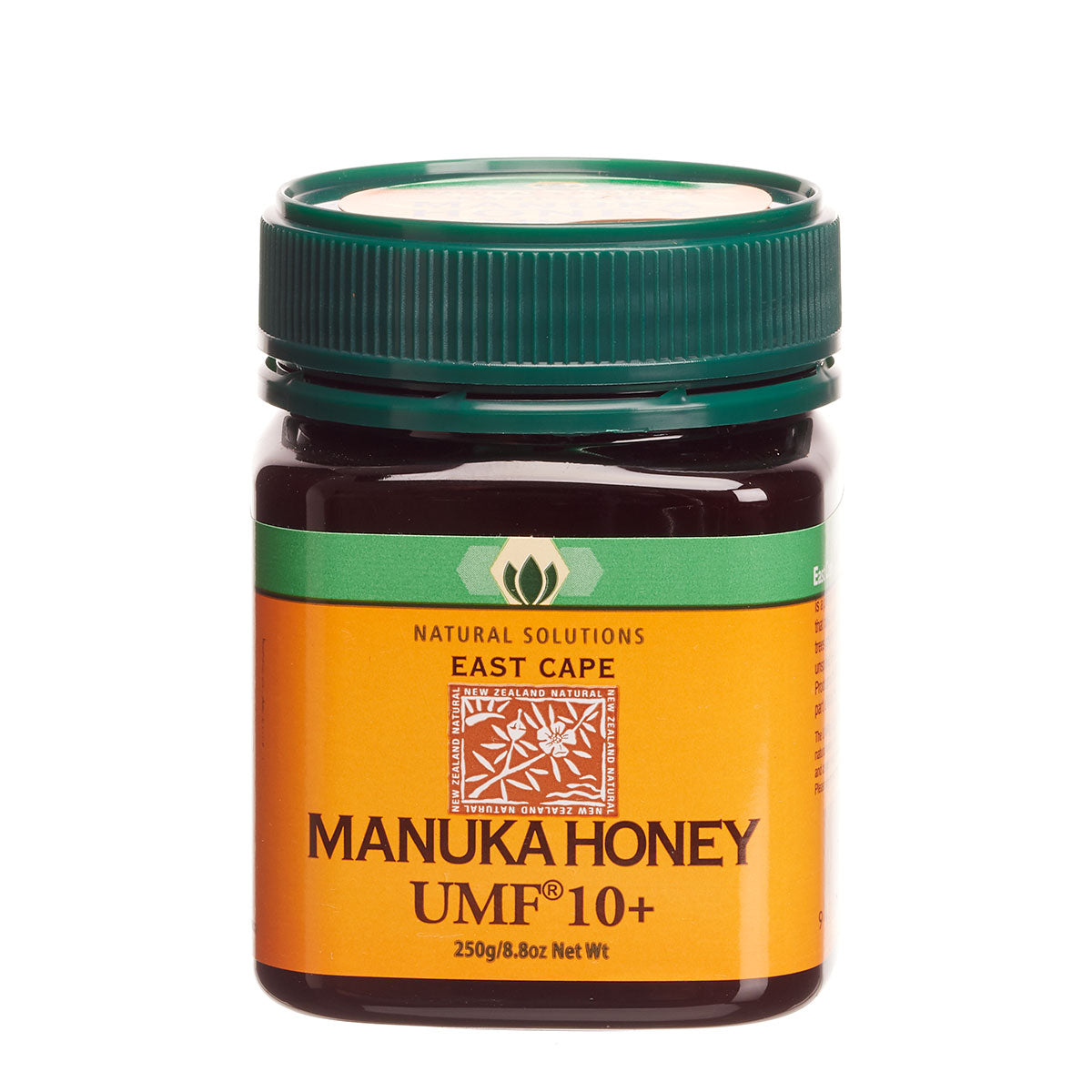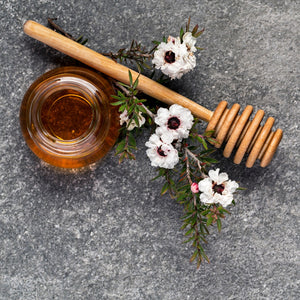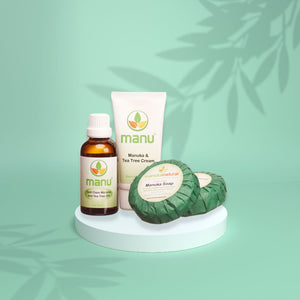
What is the unique manuka factor? What a… UMF?
What is the unique manuka factor? What a… UMF?
What is the unique manuka factor in manuka honey?
A long time ago, people sold manuka honey in bulks to bakeries or food manufacturers. In those dummy times, beekeepers who harvested it blended it with other kinds of honey and called it a ‘bush blend.’
But, one doctor’s success story about the man who had a terrible leg ulcer that just won’t go away changed how people viewed honey. The doctor used it straight out of the bottle to help the poor man.
This doctor knew what in a short time Peter Molan brought in one interview:
Even at 50 times dilution, high-activity manuka honey could completely stop the growth of bacteria.
Soon enough, for the first time in modern history, honey was being marketed to the public specifically for something other than its being good to eat.
Nowadays, people are turning back to nature, looking for a medicine-free solution.
Manuka honey is one of them.
But when you look at the jar’s label, you see some mumbo-jumbo acronyms that make you scratch your head.
There is MGO, DHA, HMF, and let’s not forget the UMF…
“Should I take the test to be able to buy this revolutionary honey…?
What the UMF…?”
What is Unique Manuka Factor, and why do we care about it?
Unique Mānuka Factor or UMF is a complete and unique grading system in a world of honey.
Unlike other grading systems, which measure just one or two markers, only the UMF™ testing process measures all three unique signature compounds. Those are Leptosperin, Dihydroxyacetone (DHA), and Methylglyoxal (MGO), present in high-quality, authentic Manuka honey.
So if any beekeeper has strong feelings about selling manuka honey, his stocks must go past some rigorous lab authenticity. But in return, his every jar will be labeled as Unique Manuka Factor manuka honey.
(boys and girls down the lab sure have some strict rules when checking any specimen, including additional testing of authenticity markers of the manuka honey).
Only the Unique Manuka Factor label guarantees its excellence, beneficial effects, originality, and conducted laboratory research.
So when you buy honey that has a UMF mark next to a number (which declares its strength), like 10+, 15+, 18+, you got yourself not just quality but also purity.
One of a kind – the real deal!
Manuka honey is made by bees that pollinate the rare manuka bush, but what makes it so unique?
Unlike other types of honey, Manuka honey has much more antibacterial activity.
Thus the Unique Manuka Factor.
If we don’t say more, you would be right, pointing out just that one claim in any discussion inside your family&friends circle.
Among others, its unusual shielding properties come from its higher level of phenolic content.
When applied to skin cells in a petri dish containing bacteria-fighting enzymes meant to mimic human immune response, UMF Manuka honey outperformed all other tested kinds of honey. It did that on several points – including how fast they killed off harmful ‘bugs’ and reduced their multiplying rate.
It kicked their sorry…
Yes, Manuka honey is a powerful antibiotic with many applications.
It’s one of the most potent natural remedies for fighting off bacterial infections.
It is effective against nearly all known human pathogens, including Staphylococcus aureus, Escherichia coli, Clostridium difficile– even when antibiotics are ineffective!
But because not all Manuka honey is high in MGO, a need for some order arose.
The Unique Manuka Factor Honey Association was founded and now provides a trademarked UMF rating system.
For Manuka honey to get a green light, it must have a UMF rating of 10 or higher, indicating a certain level of antibacterial activity. The higher the rating, the greater the activity.
source: www.theveterinarynurse.com
Dr. Molan, a professor of biochemistry at the University of Waikato, confirmed that specific amounts of manuka honey contain amazing, naturally occurring compounds, which are stable even when exposed to high temperatures or light.
However, they are not found anywhere else except in manuka honey.
So, when looking for a Manuka honey to purchase, make sure you see a Unique Manuka Factor (UMF) rating or logo – it guarantees a pure product!
7 ways to tell if your manuka honey is pure or not
You wanted to try that healing honey but, better watch out because many people will try to sell anything even under a false name.
Since over 100 beekeepers, producers, and exporters are qualified and accredited to display the UMF quality trademark on Mānuka honey products, the manuka honey industry is being compromised by the counterfeit market.
There are many “winners” in this process, and it’s not completely clear who that might be, though judging from New Zealand export figures on their own statement, it could be as many as half of all honeys sold in, i.e., England.
Many so-called manuka honeys are diluted
blends of the real deal
It has the quality trademark UMF clearly stated on the front label
It is from a New Zealand company licensed to use the quality trademark UMF with the license number on the label
Meets the production and testing standards of the New Zealand UMF honey association (check the label)
Look for monofloral honey (Multi-floral, by definition, is blended honey)
Should have a batch number on the side of the jar
Check the MGO strength (The MGO scale starts around 30 and goes up to 840. The higher the number, the stronger the antimicrobial properties).
The UMF is verified by the Official Release Certificate, which tests all four manuka markers (Leptosperin + Methylglyoxal+ DHA + HMF).
AGAIN Check the UMF Quality Trademark (guarantees you’re getting an authentic taste with only the best parts of our country’s most unique and prized commodity)
Why does it matter how much Unique Manuka Factor there is in your manuka honey?
Any honey is an amazing natural resource that has antibacterial qualities, but these properties are short-lived.
Once the honey comes in contact with your body’s enzymes and defenses, it quickly breaks down to water and oxygen due to catalase which converts hydrogen peroxide into a harmless gas.
Manuka honey has a unique, non-peroxide activity that comes from its organic compound -MGO.
Manuka is rich in this substance, and it gives the honey an extra kick of power!
The share of MGO determines the factor or the calculation of the healing properties of honey; thus, the higher the percentage of MGO in honey, the higher the UMF label.
Here is how much MGO is needed for which factor:
UMF Minimum share of MGO (methylgloxal)
UMF5+ 83 mg/kg
UMF10+ 263 mg/kg
UMF15+ 514 mg/kg
UMF20+ 829 mg/kg
The higher the MGO, the higher the UMF thus the higher the UMF rating for a given manuka bee’s nectar.
Therefore, more powerful it becomes at fighting off bacteria and combating infection in wounds or infections like MRSA (methicillin-resistant Staphylococcus).
In a study, manuka honey with an UMF rating of 10+ or higher had increased antibacterial effects. Manuka honey that was rated at 20+ also proved to be effective against drug-resistant strains of bacteria.
Some people might be fooled into thinking that all Manuka honey is created equal and therefore not doing their research before buying a product.
But there is hope!
Honey must contain high levels of methylglyoxal to be considered Real Manuka honey, thus entering your home.
Aging makes manuka honey stronger
Now you know, all the zig-zags.
If you have some ache that won’t go away because it became resistant to various bacterial infections, you can try manuka honey as an ointment.
Unlike some antibiotics that may work only as a placebo, manuka honey may disrupt the metabolic processes and bacteria’s viability.
All this depends on MGO’s (UMF) concentration.
A research showed that contrary to everyone’s expectations, Manuka honey of lower UMF grade might demonstrate equal to significantly increased antimicrobial activity compared to its UMF grade for all organisms tested.
While unexpected, this phenomenon has occurred in several other studies.
The researchers believe that these findings may be explained by the dynamic nature of the chemical composition of Manuka honey.
Let us explain…
Dihydroxyacetone (DHA) is the precursor molecule of MGO found in Leptospermum flower nectar and by itself lacks antimicrobial activity.
But with MGO, it gives its full potential.
With the maturation of the honey, a portion of DHA will convert to MGO, thus increasing MGO concentration with time. Therefore, decreases in DHA and increases in MGO concentrations begin after Manuka honey extraction, with changes continuing to at least one year of storage.
Therefore, MGO concentrations and antimicrobial activity at the time of consumer use may not be accurately reflected by UMF labeling.
That means that you will always get more than you paid for.
In the end…
We hope that we answered some of your questions; however, it’s up to you to choose the brand you like but always demand a UMF label.
Manuka Natural’s East Cape Manuka Honey shares incredible benefits with the following UMF factors 10+, 15+,18+ and 20+.
ORIGINALLY PUBLISHED on blog.manukanatural.com



Leave a comment